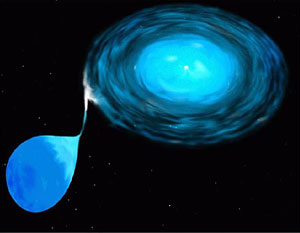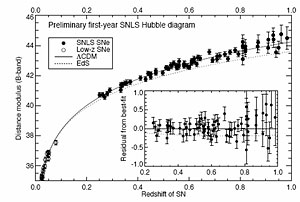 Last night we completed our observations for the Supernova Legacy Survey. This was a five year program to study supernovae using a 4-meter telescope in Hawaii in combination with several of the largest optical telescopes in the world.
Last night we completed our observations for the Supernova Legacy Survey. This was a five year program to study supernovae using a 4-meter telescope in Hawaii in combination with several of the largest optical telescopes in the world.
The project was headed by a group at a university in Toronto and a group at a university in Paris. Canada and France sponsor the 4-meter telescope that is used to discover and observe the supernovae from the point of explosion to the final days when the supernova fades from view. We call this the imaging part of the program. This data constrains the apparent brightness and life cycle of the supernova, and eventually the absolute distance to the supernova.
Our contribution to the project was primarily through our affiliation with Keck Observatory. We were typically awarded four nights a year to observe recently discovered supernovae spectroscopically. The data is used to determine the redshift and the kind of supernova explosion.
The supernovae are used to study the rate of expansion of the universe. It was this type of experiment that was first used to discover that the universe is actually dominated by dark energy.
No one really suspected the presence of dark energy for almost the entirety of the 20th century. Now, we not only know it exists but are actually trying to understand it in the same way we understand gravity, protons, and electrons. That is where projects like the Supernova Legacy Survey come in. With projects like this, we work to collect enormous samples of well-studied supernovae that can improve our understanding of dark energy.

